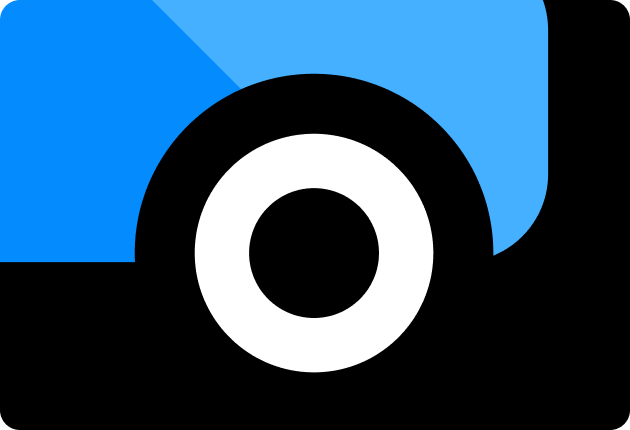
In this Article:
Last Updated on 2024-01-05
The 5 Effects of Being Self-Employed With DoorDash
We worked with these active, experienced gig-workers to write this article and bring you first-hand knowledge.

Experienced writer/researcher in the gig industry working alongside our gig-workers

5 years of experience as a DoorDash Dasher

5 years of experience working across DoorDash and Postmates

Three years of experience working as a DoorDash Dasher
The information provided in this post is for informational purposes only and should not be construed as legal, tax, or insurance advice. The content contains general information and may not reflect current legal developments or insurance changes. Any reader should consult with an insurance and tax professional to obtain insurance and tax advice tailored to their specific circumstances.
When you drive for DoorDash, you’re an independent contractor, not an employee. Sometimes people refer to working as an independent contractor as being self-employed or freelancing, but no matter what you call it, you’ll need to understand how this unique work structure affects you.
At the most basic level, an independent contractor is someone who works for themselves instead of for an employer. Independent contractors are essentially business owners, and although they complete work for other businesses (their clients), they do not have a regular employer that they can rely on.
That means two things: independent contractors have a lot more freedom, but they also have a lot more responsibility.
In fact, the IRS defines an independent contractor by saying “the general rule is that an individual is an independent contractor if the payer has the right to control or direct only the result of the work and not what will be done and how it will be done.”
In other words, as Dasher, you’ll be self-employed and have the freedom to decide how you work — no one can tell you that you must be at work by 8 am, using the company’s computers, and doing your job exactly as they tell you. You can work in your own way, on your own schedule.
But that also means that you don’t get any employee benefits, like health insurance, you’ll have to pay self-employment tax, and you’ll need to manage your own liabilities, among a few other things.
Here, we’ll cover the five most important things you need to know about how your life as a self-employed independent contractor will affect you when you start working for DoorDash.
1. How to explain DoorDash on your future job applications
If you decide to apply for another job after Dashing, you might find yourself confused about how to list your experience with DoorDash on your resume or in a job application. After all, it doesn’t always line up with the information an online job application form might ask of you, like your position name, supervisor name, etc.
Since DoorDashers are independent contractors, a good rule of thumb is to list your occupation as “delivery driver” and your employer, supervisor, or company as “self” or “self-employed.” You can then mention DoorDash in the description blurb, along with any other companies you delivered for.
When describing your experience, you can focus on all the skills it takes to run a successful business: self-discipline, the ability to work independently, time management skills, customer service skills, and more.
Ryan Shaw, who has been dashing for three years, says “I personally also include my customer ratings and feedback, as I feel like it's a positive reflection of me and what I could bring to another company.”
You may also be wondering if you can describe DoorDashing as freelancing. Although it’s not totally inaccurate to call yourself a freelancer as a DoorDash driver (“independent contractor” and “freelancer” are often used somewhat interchangeably), the two terms have different connotations. Typically, people use “freelancer” to describe a specific type of contractor who has multiple clients that come and go, whereas “independent contractor” is a bit more broad in scope.
Ultimately, whether you describe your dashing as freelancing or not will come down to your personal preference.
2. How to file taxes as a Dasher
Paying taxes as an independent contractor is a mixed bag: on the one hand, you have to pay self-employment tax and make quarterly tax payments, but on the other hand, you get to write off your business expenses, which can significantly lower your tax burden.
W2s vs 1099s — what’s the difference?
Full-time and part-time employees have taxes withheld from their paychecks, and their employers will send them a W-2 form, which they will need to file at the end of the tax year. The W-2 notes all the taxes that the employer withheld.
For independent contractors, it’s a bit different. Instead of a W-2, you’ll receive completed 1099 forms from all your clients (in this case, DoorDash). There are several types of 1099s, but the one you’ll receive as a Dasher is the 1099-NEC (Non-Employee Compensation). Although there are fields for “Federal income Tax withheld” and “State tax withheld” on the 1099, these are usually empty.
All businesses that pay $600 or more to an independent contractor are required to send that contractor a 1099-NEC. DoorDash sends you this automatically via an email from Stripe as a downloadable attachment.
If you don’t earn $600 or more, you won’t receive a 1099-NEC. You’ll still have to tally up and report your income on your tax return, you just won’t get the form from DoorDash that tells you exactly what number DoorDash reported to the IRS as having paid you. Your tax software, accountant, or tax preparer will be able to guide you through this when filing your income taxes.
Some Dashers may think that they need to file their taxes with an EIN (Employer Identification Number), but that’s not necessary — you can use your SSN (Social Security Number) because you are self-employed. You can apply for an EIN if you want, but it’s not required.
Although DoorDash is not your employer, you can find the DoorDash EIN on the 1099 they send you - you may be asked for the EIN of the business that paid you most of your self-employed income.
Technically, you have to pay taxes four times per year (but that doesn’t mean paying more overall)
Since you’re not having taxes withheld from your paycheck, the IRS requires that you make estimated quarterly tax payments if you expect to owe more than $1,000 on your yearly tax return. These are not additional payments — they’re just dividing your estimated yearly tax burden into four payments throughout the year. If you estimate well, you won’t owe any extra on your taxes, and you’ll get a refund if you overestimated.
Many Dashers believe that they are not required to do this. If they are earning more than $1,000 per year, they are wrong. If you fail to pay your taxes every quarter, and you owe the IRS some payment at the end of the year, you will additionally owe a penalty payment to the IRS for failing to pay your quarterly taxes. This penalty is usually pretty small (often 5-10% of the payment due), so many Dashers probably don’t notice the extra few hundred dollars that get tacked onto their tax bill as a penalty.
Do note that many Dashers report being able to take so many tax deductions (e.g. family-related and the mileage deduction) that they end up not owing taxes at all. If you don't owe taxes at all, then you obviously do not need to make any quarterly payments.
Thankfully, these quarterly payments don’t require you to file an entire tax return for each one. All you have to do is go to the official IRS payment portal and submit your payment, which takes only a few minutes. Then, at the end of the tax year, you’ll submit your full tax return.
Beware the self-employment tax…
As an independent contractor, you’ll also need to pay the “self-employment tax,” which is 15.3% as of 2024. As an employee, you would pay half this amount, and your employer would cover the other half. But as a self-employed person, you need to pay both halves.
…but take advantage of write-offs and deductions
The good news is that as an independent contractor, you can write off a lot of your expenses, so that will help reduce your tax burden. For example, if you spent $1,000 on equipment for DoorDashing, you would calculate the amount of taxes you need to pay as if your income were $1,000 lower (you still need to report your full income, though).
An example calculation
Disclaimer: we're offering this example to help you understand a rough idea of the concepts involved here. We cannot offer tax advice; please consult your tax advisor or tax software for advice related to your specific tax situation.
To make all this easier to understand, let’s do an example calculation. Let’s assume that you’re dashing full-time as your only source of income, and your income for the year is $45,000.
To start, let’s calculate your deductions. We’ll assume that as a full-time dasher, you’re driving 100 miles per day for 250 days each year (allowing time off for weekends, holidays, etc.). That comes to a total of 25,000 miles per year. We’ll assume that’s your only deduction for simplicity’s sake, but in real life, there could be more.
In 2024, the IRS allows you to deduct 67 cents ($0.67) for each mile you drive for business (this changes regularly, so make sure you stay up to date with the current rates). From that, we can calculate:
25,000 miles * $0.67/mile = $16,750
Now, we can subtract that from your total income:
$45,000 - $16,750 = $28,250
This is the number that you’ll use to calculate your tax burden. Remember: You still need to report your full income, but you will only owe taxes based on this adjusted amount.
Now, let’s calculate self-employment tax. The self-employment tax rate in 2024 is 15.3% of net income (your income minus deductions, etc.). So:
$28,625 * 0.153 = $4,322.25
Let’s round that to $4,320.00 for simplicity’s sake.
At a taxable income of $28,625, you’ll also owe 12% in Federal income tax. For income tax purposes, you can deduct 50% of what you paid in self-employment tax ($2,160):
($28,625 - $2,160) = $26,465
Federal income tax uses marginal tax rates, which are a bit complex. Essentially, the first $11,000 of income is taxed at 10%, and then your income from $11,001 is taxed at 12%, and so on through the remaining tax brackets. We can calculate that like so:
($11,000 * 0.10) + (($26,465 - 11,000) * 0.12) = $2,955.80
Again, we’ll round to $2,955. Combined with self-employment tax:
$4,320 + $2,955 = $7,275
So, you would owe around $7,275 in federal taxes (remember, this is a simplified example — tax codes are very complex and the actual amount of taxes you owe with this income could be very different). You would also owe state taxes on top of this, assuming you live in a state with income tax.
As an independent contractor, you need to pay quarterly estimated taxes, so let’s break that down into four payments:
$7,275 / 4 = $1,819
So, you would need to pay about $1,819 per payment in accordance with the IRS’s estimated tax payment schedule. If you estimated correctly, then you won’t owe anything extra when you file your annual tax return, and you also won’t get a refund.
Once again, this is a simplified example. There are other ways to calculate your estimated tax payments that can be beneficial, such as estimating based on your previous annual income, but we won’t go into those here.
How does that compare to what you’d owe as an employee?
As a W2 employee making $45,000 per year, you would be able to take the 2024 standard deduction of $14,600 (independent contractors can take the standard deduction too, but in this scenario, itemized deductions came out to more, so you would opt for that):
$45,000 - $14,600 = $30,400
From there, you would owe 7.5% in social security and Medicare taxes:
$30,400 * 0.075 = $2,280
Now, calculating federal income tax:
($11,000 * 0.10) + (($30,400 - $11,000) * 0.12) = $3,428
Combining those two, we get:
$2,280 + $3,428 = $5,708
So, as an independent contractor making the same income, you would owe approximately $1,567 more in taxes. However, you would be getting complete control over your schedule in exchange.
3. Can Dashers qualify for unemployment benefits?
One of the downsides of being self-employed is that you usually aren’t eligible to receive any unemployment benefits if you lose a significant amount of business. Luckily, you probably don’t have to worry about that too much when Dashing — DoorDash has a pretty robust business with lots of demand.
But what about if you’re currently collecting unemployment and want to start working for DoorDash — will that make you ineligible to receive benefits?
Unemployment benefits are administered on a state level, so it will depend on where you’re located. In California, you can work for DoorDash while collecting unemployment.
In other states, things can be more complicated. Sometimes, states have income thresholds, so if you don’t exceed those, you can Dash while collecting unemployment.
Part of the confusion comes from the fact that Dashers are not employees, but are considered employed — your employer is just yourself. If you are making a significant income from DoorDash, you are considered employed, but if your income is low enough, you may be considered underemployed, which can qualify you for benefits.
If you’re unsure about your eligibility for unemployment as a Dasher, check with your state’s unemployment office.
4. What legal liability do you open yourself up to while Dashing?
As a self-employed person, you don’t have a separate employer to shield you from legal liability if you hurt someone or something on the job — all the liability falls squarely on you.
To protect themselves, many self-employed people form an LLC (limited liability company), which ensures that their personal and business assets will remain separate in the case of a lawsuit.
As a Dasher, you can choose to set up your own LLC, but most Dashers find doing so unnecessary. DoorDash provides all Dashers with up to $1,000,000 in commercial liability insurance coverage for accidents that occur on the job, so between that and your own car insurance policy (which you are required to have), you’ll often be covered.
5. Most people do it for the lifestyle benefits
It’s probably no surprise that the experience of working as an independent contractor is different from working as an employee.
As a Dasher, you won’t have anyone getting on your case about showing up late to work, micromanaging you, or telling you when you can and can’t take off. All of that is entirely up to you — you’ll decide when and how you work. You also won’t need to take any drug tests.
To succeed as a Dasher, you’ll need to build self-discipline and time management skills because there won’t be anyone but yourself to hold you accountable. If you keep getting a late start and don’t manage to get enough deliveries in, no one will call you into their office for a chat — you just won’t make enough money to pay your rent.
Ryan also stresses how important budgeting skills are. “Factor in the cost of gas and potential car repairs or maintenance. Depending on how much you drive for Doordash, and especially if it's something you do full-time, this can be several hundred dollars per month. You may want to also set money aside for unexpected emergencies like a broken suspension part that renders your car unsafe to drive. I learned that lesson the hard way.”
That level of freedom and responsibility can be exhilarating for some and scary for others. But ultimately, it’s a great exercise in developing an entirely new set of skills that can help you succeed in whatever endeavors you undertake in the future.
Let’s get started
If you’re ready for the freedom that comes with dashing, take the first steps toward becoming self-employed and sign up to be a Dasher today — it only takes 5 minutes, and you can start earning within days (subject to your approval as a Dasher, and local availability).